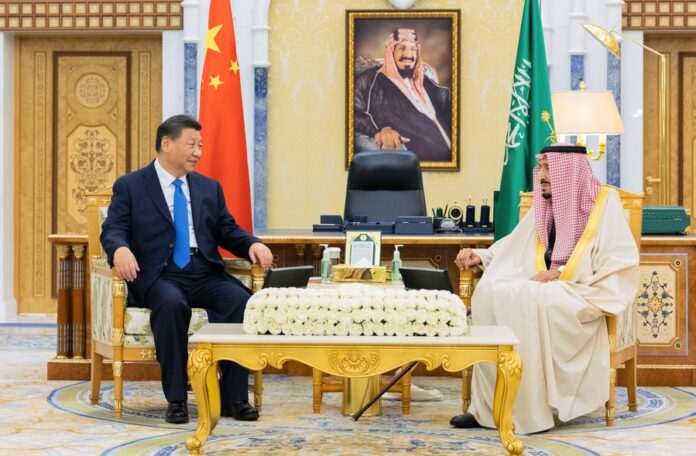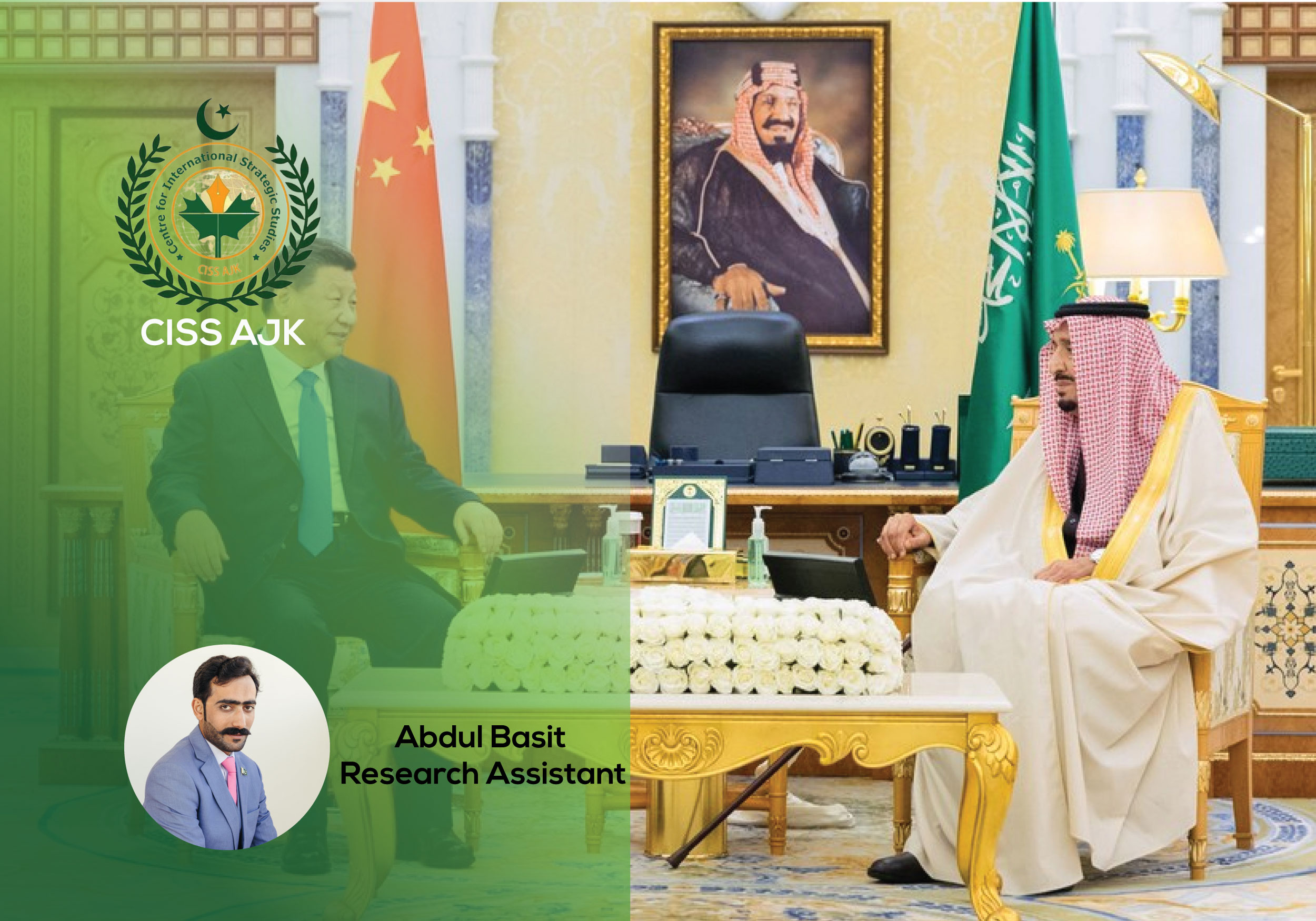The security architecture of the whole idle East is being revised

December 31, 2022
Sino-Saudi Nexus a new strategic alignment
The security architecture of the whole idle East is being revised
207

Former American president Barack Obama referred to himself as the first Pacific president. The proponents of his policy frameworks greatly admire him for his attempt to rebalance American foreign policy’s focus away from the Middle East to Asia. Asia is considered as a prophesied center of the 21st century economy.
However now it seems a failure of the Obama Administration to abandon the Middle East. The reality is that the pivot was a failure that created a security vacuum providing an opportunity for China to seep in. It is said that you mustn’t put all your eggs in one basket. China in the same vein is trying to integrate various states across the globe in its geo-economic and geostrategic model. Saudi Arabia has long been in a strategic partnership with the USA, however the recent setbacks badly harmed the longstanding nexus.
China smelled the need and has proffered a hand of alliance to the Kingdom. The USA, which has for more than eight decades prized its strategic alliance with Saudi Arabia, today finds its old partner in search of new friends; particularly with China, which the USA worries is expanding its sphere of influence around the world.
The welcome given to President XI Jinpeng by Saudi Arabia signals a new beginning, ominous to US global designs, wherein the Middle East has a special place. The oil producing Middle East has an exclusive relevance in international politics. Saudi King Salman and President Xi of China have inked a comprehensive strategic partnership along with 34 investment agreements during Xi’s visit. Over and above the two countries signed several agreements and MOUs, including on hydrogen energy and encouragement of direct investment.
Additionally two other summits, including the China-Gulf summit and China-Arab summit, were held with leaders from GCC and other Arab states. China fought for a peaceful resolution to the Palestinian conundrum. Everything came under discussion and endorsement except validation to any of the American foreign policy objectives. To achieve further gratitude and warmth in the relationship, Crown Prince Muhammad Bin Salman proposed to hold a bilateral summit after every two years and transform the existing consanguinity into a strategic partnership.
The Saudi inclination towards China has various logical bases. In August 2022 US President Joe Biden visited the Kingdom, unsuccessfully, after no respectful response. In fact President Biden during his election campaign vowed to follow Obama’s doctrine of focusing on China and a swift withdrawal from the Middle East. He promised to return to the nuclear deal with Iran, to end the war in Yemen, and to treat Saudi Arabia as the “pariah” he considered it to be.
Moreover the Saudi demand for precision missiles for the Yemen war was also not fulfilled. Biden also failed to revive nuclear the deal with Iran coupled with the Ukrainian war lead to an energy shortfall. Consequently the USA has to utilize its strategic stockpiles of oil amid production cuts and a rise in fuel prices. Arab states, primarily Saudi Arabia and the UAE, remained neutral in case of a US-China trade war refrained from choosing sides during the Ukraine war.
China also enjoys a congenial environment with Iran. The Sino-Saudi nexus may help freeze the ice of rivalry between Saudi Arabia and Iran. The likely course of events would surely catalyze smooth and strong trade prospects in the region. This visit may not substantively expand China’s influence but signal the continuing decline of US influence in the region. Till now no response from the USA over Xi’s visit, however a heightened anxiety, could be smelled and that may burst out in a while.
The subsequent US attempts to tame the Arabian states remained in vain. Consequently the Arab world seems no more interested in fulfilling US designs. The connections of the Gulf states, primarily Saudi Arabia, to China are vital to their economic development, meaning that US security commitments cannot be a substitute for their economic relations with China. According to Saudi officials, two-way trade has experienced a swift boom which was almost 304 billion Saudi riyals ($80 billion) in 2021 and 103 billion Saudi riyals ($27 billion) in the third quarter of 2022.
The events indicate the strong Chinese ingress into the peninsula. China vows to rise peacefully with a multilateral approach incorporated in its Belt and Road Initiative. Riyadh and Beijing have a convergence of interests primarily in economic development projects and in a regional security mechanism. Chinese BRI and Saudi vision 2030 have mutual endeavours.
Those very aspirations have received a phenomenal impetus during President Xi’s visit to the Kingdom. Since Chinese economic multilateralism has extended its fruits of development to more than 150 states across the globe, it is likely to be a big opportunity for the Arabian peninsula to bear fruits. This year, Saudi Arabia has already made a huge joint venture with the Chinese government with Aramco’s $10 billion investment in a refinery and petrochemical complex in China’s northeast.
The visuals from Xi’s visit choreographs a preceding course of partnership between the premiers of Asia and the Arab world. This initiative appears to harness economic arenas and avoid either sort of binary vision of global politics usually vowed by the USA. Beijing and the Kingdom seek to further their nexus with a vision to grab global capital.
In the contemporary world China is the largest buyer of oil with Saudi Arabia as its largest supplier. Both sides have signed agreements worth $30 billion initially with prospects of further increase. The most significant deal is the one over Huawei Technologies, a company which has been banned by the USA. China is also eyeing to create a cooperation over security and defence arena for a Kingdom once a staunch opponent of the communist bloc.
Moreover the significant factor of their convergence is non-interference in the domestic affairs of each other. Amid a radical stance of successive US administrations over the issues of domestic politics, regional security and global energy the Kingdom seems exhausted. Luckily it finds China with nothing to do with the internal matters of allies. The former affirmed its support for the One-China Policy and the latter vowed to materialize its security concerns.
China appreciates the role of the Kingdom in maintaining a balance and stability for the oil prices. Now China has loomed up as an alternate and fruitful partner with a financial and political replica more congenial to the Arabs. It adheres to the principle of noninterference and does not, therefore, link its diplomatic and economic role with issues of democracy and human rights. The above mentioned arguments have been substantiated by a 4000-word joint statement given by Xi and MBS.
China also enjoys a congenial environment with Iran. The Sino-Saudi nexus may help freeze the ice of rivalry between Saudi Arabia and Iran. The likely course of events would surely catalyze smooth and strong trade prospects in the region. This visit may not substantively expand China’s influence but signal the continuing decline of US influence in the region. Till now no response from the USA over Xi’s visit, however a heightened anxiety, could be smelled and that may burst out in a while.
President Xi’s visit to Saudi Arabia is being juxtaposed with Biden’s trip earlier in August. China considers the recent activity as a maiden large-scale diplomatic engagement with the Arab world. It is an attempt to detach a US ally and further expand its global footprint. Professor Dr. Zahid Mehmood Zahid argues that, now, the USA might put its weight into the favour of UAE, the way it has already done in the case of AUKUS by preferring the UK over France, elevating the status of the former and endorsing it as the leader of Europe.
The writer is an Assistant Research Officer at the,Center For International Strategic Studies, AJK



